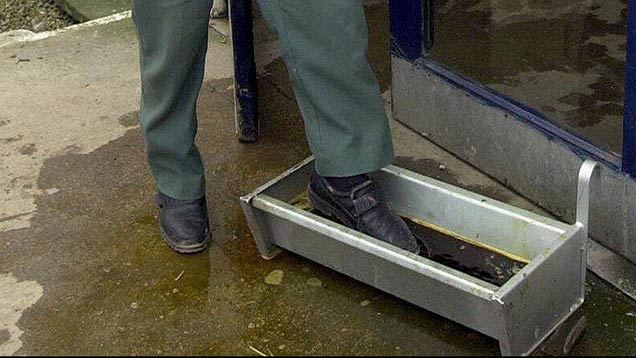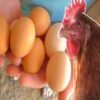- このトピックは空です。
- 投稿者投稿
- 3月 19, 2025 12:13 am #597149

Maintaining a healthy poultry farm requires more than just proper feeding and housing; biosecurity measures play a crucial role in safeguarding flock health. One essential biosecurity practice is the use of a foot bath, which serves as a barrier against disease transmission.
Poultry farms are susceptible to various diseases that can quickly spread through contact, equipment, and personnel. A foot bath is a simple yet effective tool that helps mitigate these risks by ensuring that anyone entering or exiting the poultry area does not carry harmful pathogens.
This article explores the role of foot baths in poultry farms and how they contribute to maintaining a healthy flock.
1. Preventing Disease Transmission Through Biosecurity
Foot baths are a critical biosecurity measure in poultry farms, designed to reduce the risk of disease transmission. Pathogens like bacteria, viruses, and fungi can easily be carried into poultry houses on the soles of footwear.
The foot bath, typically filled with a disinfectant solution, acts as a barrier, ensuring that farmworkers, visitors, and equipment do not introduce harmful microbes into the poultry environment.
By stepping into the foot bath before entering or after exiting the poultry house, personnel can effectively minimize the chances of contaminating the flock. This simple measure is vital in preventing outbreaks of diseases like Newcastle disease, avian influenza, and salmonellosis, which can devastate poultry operations.
2. Enhancing Farm Hygiene Standards
Maintaining high hygiene standards is essential for the health and productivity of poultry flocks. Foot baths contribute significantly to overall farm hygiene by ensuring that footwear is cleaned and disinfected regularly.
This practice helps reduce the buildup of dirt, manure, and organic matter, which are breeding grounds for pathogens. Consistent use of foot baths, combined with other hygiene practices like handwashing and equipment cleaning, creates a cleaner farm environment.
Improved hygiene not only reduces the risk of disease but also enhances the overall well-being of the poultry, leading to better growth rates, higher egg production, and improved meat quality.
3. Cost-Effective Disease Prevention
One of the most significant advantages of using a foot bath on a poultry farm is its cost-effectiveness in disease prevention. Preventing disease outbreaks through biosecurity measures like foot baths is far less expensive than dealing with the aftermath of an outbreak, which can include high mortality rates, loss of production, and increased veterinary costs.
Disinfectant solutions used in foot baths are affordable and easy to maintain, making them an economical choice for farmers. Regular use of foot baths helps maintain flock health and productivity, ultimately leading to increased profitability and sustainability for the poultry operation.
4. Educating Farm Workers On Biosecurity Practices
The installation of foot baths serves as a constant reminder for farmworkers to adhere to biosecurity protocols. It encourages personnel to be vigilant about their role in maintaining farm health.
Foot baths are often placed at key entry and exit points of the poultry house, ensuring that workers and visitors practice proper disinfection procedures consistently.
This visibility helps instill a culture of biosecurity among farm staff, emphasizing the importance of disease prevention in everyday farm operations. Educated and conscientious workers are more likely to comply with other biosecurity measures, creating a safer and healthier farm environment.
5. Customization And Effective Disinfectant Use
The effectiveness of a foot bath depends on proper setup and the use of the right disinfectant solution. Foot baths can be customized to fit the specific needs of a poultry farm, with considerations for size, location, and disinfectant type.
The disinfectant solution must be chosen carefully, ensuring it is effective against common poultry pathogens while being safe for workers and birds.
It is crucial to maintain the disinfectant at the correct concentration and to replace the solution regularly to maintain its efficacy. Customization ensures that the foot bath meets the farm’s specific biosecurity needs, providing maximum protection against disease transmission.
In conclusion, the role of a foot bath in a poultry farm is vital for maintaining biosecurity, preventing disease transmission, and ensuring high hygiene standards. This simple yet effective tool helps reduce the risk of introducing harmful pathogens into the poultry environment, protecting the flock from devastating diseases.
The cost-effectiveness of foot baths in disease prevention, along with their role in educating farm workers on biosecurity practices, makes them an indispensable component of poultry farm management.
By customizing foot baths and using the right disinfectants, farmers can enhance biosecurity measures, ensuring the health and productivity of their flocks. Implementing foot baths as part of a comprehensive biosecurity plan is crucial for the long-term success and sustainability of poultry farms.
Read Also: Types of Poultry Feeds: Meeting Nutritional Needs
- 投稿者投稿
- このトピックに返信するにはログインが必要です。






